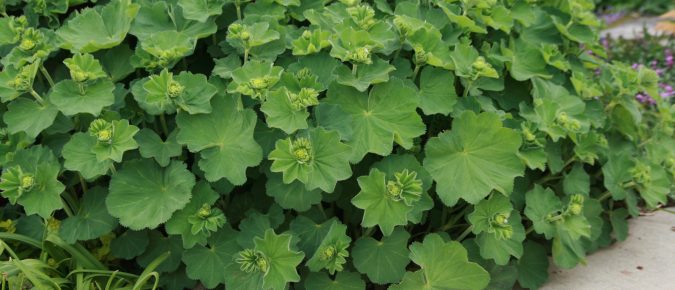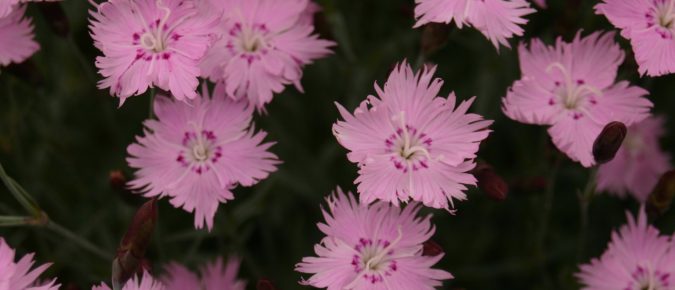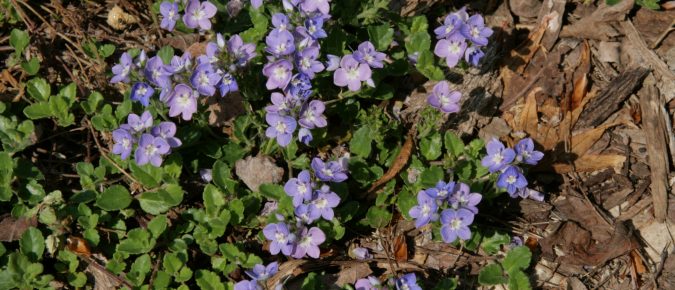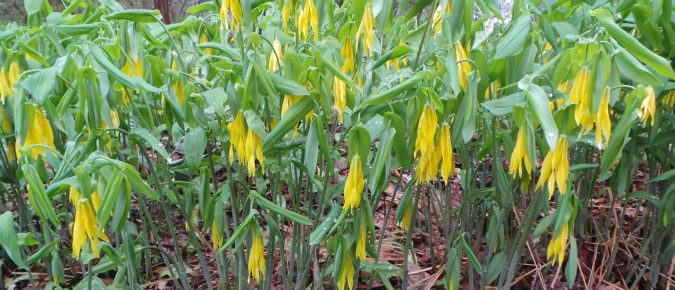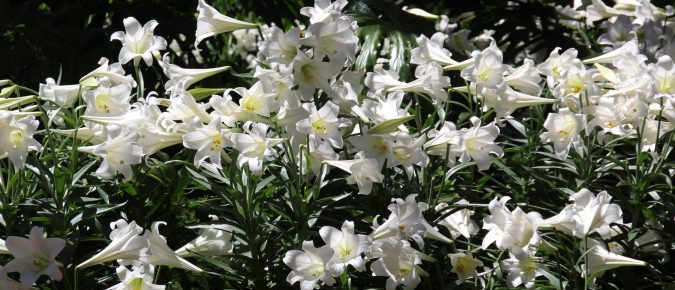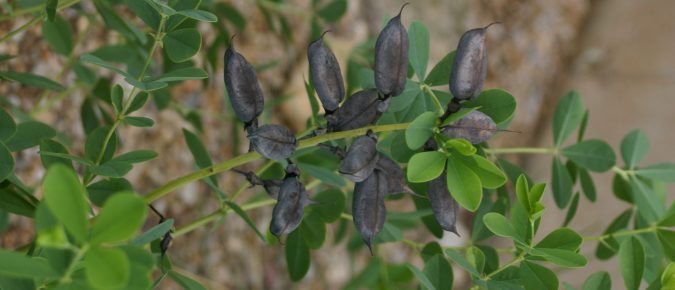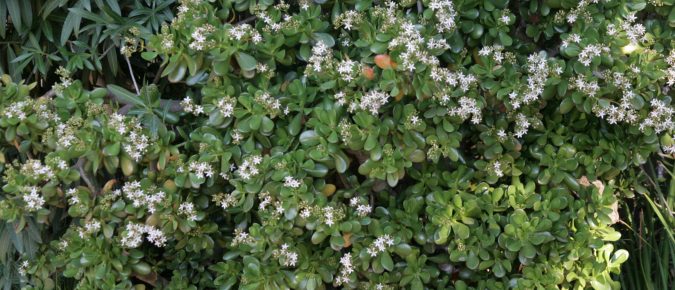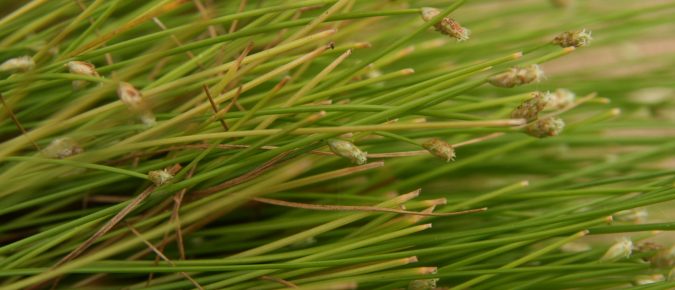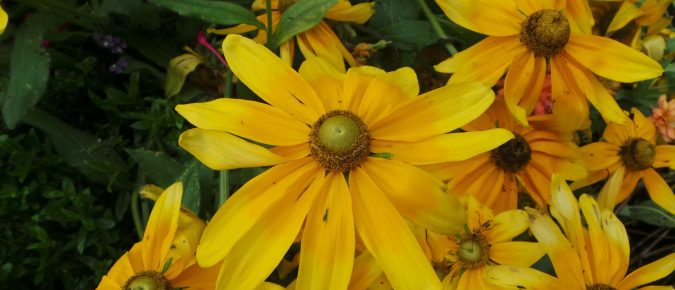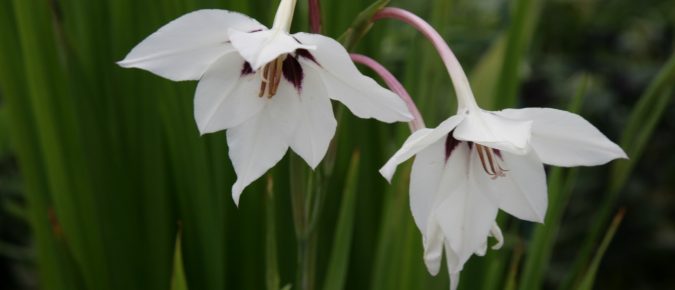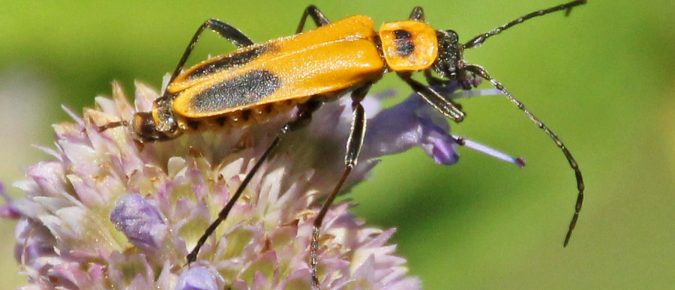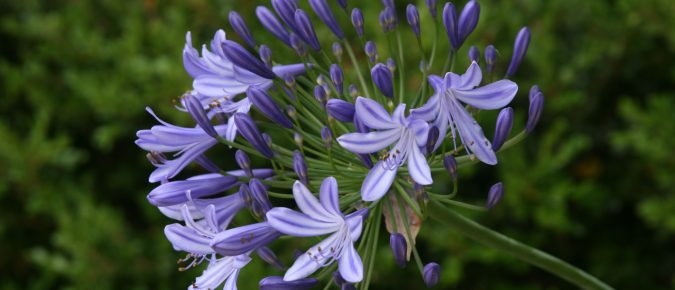Lady’s mantle is an old-fashioned plant that still has a place in the ornamental garden. The European native Alchemilla mollis offers interesting foliage and an airy spray of yellow flowers in early summer. To learn more about this tough plant, read this article…
Want a sturdy, pink-flowered Dianthus for the border, rock garden or cottage garden for a burst of color this time of year? ‘Bath’s Pink’ is one of the most tolerant of heat, cold, humidity and drought – and is still vigorous enough to form a mat up to 3 feet across. To learn more about this great cultivar, read this article…
Do you need a low-growing groundcover that also flowers in the spring? Something to cover poor, rocky ground, or fill in among flagstones or pavers? There are a number of species of speedwell that fit the bill. To find out more about these plants in the genus Veronica, read this article…
Are you familiar with the wildflower Uvularia grandiflora, one of the first woodland perennials to emerge in the spring? Also planted as an ornamental with understated pendant yellow flowers, this native plant is at home in the informal, shady garden as well as the woods. To learn more about this relatively uncommon plant, read this article on bellwort…
You can readily find Easter lilies in bloom at this time of year. This hardy bulb is forced out of season to provide floral displays for this holiday. Whether you want these fragrant flowers to brighten your home at this time of year, or would just like to have them bloom in your garden at their normal time, this is a plant well worth getting to know. Read on to learn more about Lilium longiflorum …
Baptisia australis is a great, under-used herbaceous plant. This tough, but beautiful, prairie native has been chosen by the Perennial Plant Association as their Plant of the Year 2010. Purple-blue flowers and foliage that remains attractive throughout the season make this a nice a specimen plant or a good addition to the perennial border. Read more…
Crassula ovata is a tender succulent south African native that is very easy to grow and propagate, making it a very common houseplant. You probably know it by its common name of jade plant. To learn more about jade plant read this article…
Want a fun plant for the water garden, containers or garden bed? Give fiber optic grass a try! Not really a grass, but a sedge, this low maintenance plant has small flower spikes at the tips of the grass-like stems reminiscent of those fiber optic lamps, hence the common name. Although it’s not hardy here and is frequently used as an annual, you can overwinter it in the house. Read this article on fiber optic grass…
Make a splash in the garden with a brightly colored black-eyed Susan – minus the black eye. ‘Prairie Sun’ is a former All America Selections winner with a green center and rich, orange and yellow petals. Learn more about this intriguing cultivar …
Here’s a plant in the iris family disguised as an orchid – peacock orchid, that is. Despite the common name, this is a species of Gladiolus that is easily grown as a tender summer bulb in our climate. And the bonus is that it’s fragrant! Learn more about this interesting flower here…
You’ve probably noticed elongated, orange beetles roaming about on flowers lately. These goldenrod soldier beetles are the most common species of soldier beetle in our area. They are common at this time of year, feeding on pollen and maybe the occasional small insect. Read this article to find out more about these insects…
Are you ready to add an exotic blue flower to your summer patio display, and then keep it as a houseplant? Lily-of-the-Nile is used extensively in landscaping in mild climates, but it’s not any harder to grow this plant in the north than many other tropicals. Learn more about the tender perennial Agapanthus in this article…

